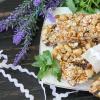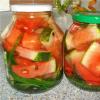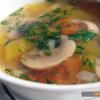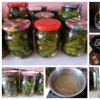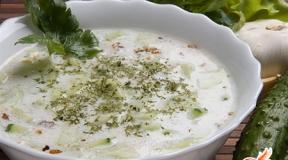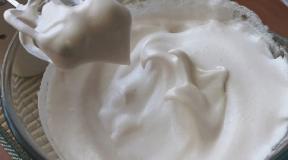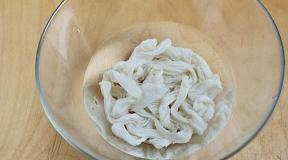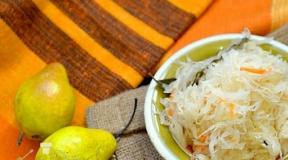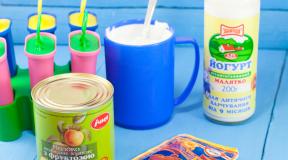Jerusalem artichoke (earthen pear) is a valuable feed in animal husbandry. Agricultural innovations. Jerusalem artichoke - industrial processing Jerusalem artichoke as animal feed
As pet food in Jerusalem artichoke, you can use both tubers and stems, the green part of the plant.
And it is not surprising that the nutritional value of tubers is twice as high as that of the classic forage plant - fodder beet:

Jerusalem artichoke: food, and not only for rabbits
Excellent food and aerial part of the plant - green stems and leaves. They are eaten with pleasure by goats, sheep, cattle. Excellent silage. The green mass can be used in the form of silage, haylage, flour. The stems are cut twice. For the first time, when the stem reaches a height of about a meter, while cutting off above the last pair of leaves. New shoots will begin to grow from the axillary buds. The second cutting of the stems is carried out in September.
Practically universal feed. The feeding rate is 4-5 kg of tubers per day - and the milk production of sows increases, cows increase milk yield, the fat content of milk increases, chickens begin to lay earlier and more intensively

Useful and relatively cheap
What is the cheapness? The thing is that Jerusalem artichoke can be planted somewhere on uncomfortable soils, on the outskirts, where the processing of the site is difficult. And an empty piece of land will bring excellent returns! Green food can be used for its intended purpose throughout the entire summer-autumn period, tubers can be dug up in late autumn, can be left until spring. In the ground, they are perfectly preserved.
BUT, given the biological characteristics of Jerusalem artichoke, we generally do not recommend planting this plant in our garden, even on the outskirts. Moreover, if you use a tractor for soil cultivation. It is better to choose a permanent place for the earthen pear away from the main garden- and there it is calm, without disturbing anyone, the plant will only bring benefit and nothing else.
Learn more about the features - or why Jerusalem artichoke might upset you
Will Jerusalem artichoke replace beets for feeding? By the presence of nutrients, nutrients - no doubt about it. And there was even such a period in history when in the 30s it was decided to grow Jerusalem artichoke en masse, they wanted to put the production of this super useful plant on an industrial level. But Jerusalem artichoke has one feature that significantly reduces the demand for culture as a fodder plant.
Jerusalem artichoke tubers cannot be stored for a long time. those. it will not work to put the entire crop in a vegetable store and use it for your household needs throughout the winter season. In this sense, beets and potatoes are irreplaceable. (Then, in the 30s, many collective farms failed to preserve their crops, and the great ideas for large-scale Jerusalem artichoke cultivation were ruined.)
It preserves excellently in the soil, at least in our, Poltava, region the simplest, not varietal, Jerusalem artichoke winters excellently, does not freeze.
As an early spring feed, Jerusalem artichoke is simply unmatched. As a safety reserve, such a culture must be planted.
(Visited 3,585 times, 1 visits today)
Many cultivated plants are used to feed animals: corn, sugar beets, sunflowers, cereals, legumes. These plants are grown on many farms, which cannot be said about the earthen pear. Jerusalem artichoke is a root vegetable, the beneficial properties of which are not known to many.
An earthen pear does not look very aesthetically pleasing and attractive: dark oblong tubers with many thick shoots. The stems of this plant are quite long - about 2 meters, with large leaves and yellow flowers at the very top. The stem is more than 2 centimeters thick in girth. It is a unique plant whose root and tip are an excellent addition to the daily diet of livestock. The culture is provided as food for cows, horses, pigs, goats, sheep, rabbits, and poultry.
Due to the fact that this is a very unpretentious plant that does not require frequent weeding, watering and the use of fertilizer, many farmers grow it on their backyards. In addition, Jerusalem artichoke has exceptional resistance to pests, including the most terrible enemy of agricultural crops - the Colorado potato beetle. This is a very productive plant: more than 250-270 centners of root crops and more than 450 centners of green mass can be harvested from one hectare of land.
The root crop is used as a separate feed, while the green leaves and stem are used for silage preparation. Harvesting Jerusalem artichoke for the winter occurs in the month of November. Its leaves remain green and juicy until late frost. Thanks to this, the animals whose owners grow this crop have the opportunity to receive fresh green fodder almost until winter. The foliage is very well combined with legumes, gives a good weight gain in animals, increases milk yield in cows.
The optimal period for using the stems for silage is before or during flowering. During this period, the stems and leaves contain the maximum amount of sucrose, which is a source of energy for animals. During flowering, the stems and roots of Jerusalem artichoke have the maximum amount of coarse fibers and minimum moisture, which increases the nutritional value of this crop.
The root crop has only one drawback - it is stored in a cellar or basement for a month, then the crop begins to rot. Most often, this culture is left for the winter in the ground, it is not afraid of even the most severe frosts. It is noticed that in autumn the tubers of the plant have a slightly bitter taste, and after winter they become sweet. If it is not possible to leave the crop in the ground for the winter, it is stored in earthen pits. But at the same time, each layer of root crops is sprinkled with sand, which ensures their ideal safety during cold weather. Jerusalem artichoke is harvested for the winter not only if the owner wants to save money on expensive fodder. Culture contains many useful and important elements.
For better preservation of the harvest, Jerusalem artichoke is allowed to silage, there is both a root crop and high tops with leaves. In addition to this culture, it is recommended to add fresh cabbage, mallow, and cow parsnip to the silage. The percentage of tubers in the total mass should not be less than 30.
For fattening pigs in winter, they use both raw and boiled roots. Boiled Jerusalem artichoke does not lose its useful properties, it thickens better in the silage mass and has a more attractive taste for animals. Rabbits are preferably given raw roots and tops. Silage is also made for these rodents, to which fresh meadow grasses and clover are added. The thick and fibrous stems of the plant are an excellent material not only for food, but also for grinding the teeth of rabbits.
Some pig farm owners have appreciated the benefits of growing this plant. They plant a separate area with Jerusalem artichoke, which, after the roots have ripened, enclose it, making a pen for pigs. This can be done both in autumn and spring. Animals themselves get 40% of their food, digging Jerusalem artichoke from the ground and at the same time fertilizing the territory.
Jerusalem artichoke, the benefits of which are undeniable, has a unique composition and contains proteins, fats, useful carbohydrates and a complex of vitamins and minerals. It is rich in zinc, iron, tubers contain all the B vitamins, which are several times more abundant in Jerusalem artichoke than in beets and potatoes.
Tubers of this root crop at the very beginning of autumn have a high digestibility and assimilability - about 80%. If Jerusalem artichoke is stored correctly or remains in the ground for the winter, then in the spring the digestibility of the culture by animals is 50%. The moisture content of the root vegetable is about 75%, the rest is coarse fibers that contribute to the healthy digestion of animals.
Jerusalem artichoke tubers have a low content of protein, iodine, magnesium, ash, so they cannot be used as a separate feed, it is best to combine root crops with cereals and legumes, hay, protein concentrates. In terms of its composition and nutritional value, Jerusalem artichoke is the closest to barley and wheat, which can significantly save the cost of feed for domestic and farm animals.
Like root crops, grass also contains a minimum amount of ash, iodine, magnesium, zinc. Jerusalem artichoke contains the maximum amount of inulin and starch. Inulin is a complex carbohydrate composed of fructose that is very well absorbed by almost all animals. Inulin is contained in an amount of 50% of the total carbohydrate composition. Inulin is an energy supplier for pets, which is especially important in winter.
The practical use of Jerusalem artichoke as a high-carbohydrate feed and additive to the main diet of cattle, rodents, pigs, poultry has already been scientifically proven. Many owners of private farms have long appreciated the benefits of growing this crop to save money on the purchase of feed. Jerusalem artichoke is a versatile plant that can be used both tubers and stems for animal feed and green fodder production.
FOR CHICKENS TO RACE IN WINTER (SECRETS OF KEEPING, FEEDING, BREED SELECTION)
(ENCYCLOPEDIA OF INTERNET TIPS)
· Considering that the maximum egg production in chickens is observed with a day length of 12-14 hours, it is necessary to additionally illuminate the room with artificial light lamps. The usual schedule for turning on lamas is from 6 to 9 am and from 5 to 20 pm. The lamps are positioned in such a way that birds cannot damage them.
· Rechargeable flashlights can be used as a source of additional lighting. They will allow you to save your finances, because electricity is getting more expensive every day. In addition, the lanterns guarantee fire safety.
· The chickens were exposed to various lighting methods and techniques. There was no special sensation, nature still cannot be fooled. The duration of daylight hours was arranged from 24 hours to 6 minutes - there is no particular effect, excessive lengthening of the daylight period does not give anything, it is still optimal 13-15 hours. If less than optimal, egg production decreases. Changed the intensity of light, also did not particularly affect egg production. They tried to influence the chickens with flashes of light, out of fright, the chickens ate better food, and, probably as a consequence, at the first stages of the experiment, egg production increased, but not for long and not significantly. The chickens were left in absolute darkness, lighting was given only during feeding - there was no decrease in egg production.
· Chickens have a very poor sense of smell, and she cannot timely recognize the quality of the feed offered to her. Even after trying moldy and rotten food and having paid with a violent reaction of the gastrointestinal tract, the bird will peck on unsuitable food.
· Oxidized fish oil, meat, bone and fishmeal (with the smell of old bacon) are also not subject to feeding, since they neutralize vitamins, which inevitably leads to vitamin deficiency.
· At a temperature of minus 5 degrees, the incidence of chickens on average decreases to 26%. At minus 1 and a cold wind, catkins and scallops begin to freeze. Especially - in roosters with a leaf-shaped crest. And, for example, the temperature of minus 40 degrees can be hatched by chickens only for 5 minutes, while other species of birds tolerate it more or less. Conclusion: if we want eggs in winter, we insulate the chicken coop.
· Good ventilation is the key to healthy chickens. But you also need to make sure that there is no draft in the chicken coop.
· To improve the health of the air, you can regularly arrange juniper fumigation for chickens in winter. To do this, put a brazier or grill with coals in the chicken coop and throw in fragrant herbs: oregano, juniper branches, dry caraway seeds, etc. When heated, plants evaporate valuable aromatic substances that are very useful to inhale not only for animals and birds, but also for people.
· So that the floor in the hen house is always dry and the chickens do not get sick, the floor in the hen house is covered with peat bedding. To do this, dry peat is poured onto the floor of the chicken coop with a layer of 10-15 cm.
· The top layer of droppings is removed weekly. The liquid manure mixes with the peat and there is no unpleasant odor. The peat litter is always dry, therefore, the legs of the bird are also dry and there are no colds. In addition, peat with droppings is an excellent fertilizer.
· To feed the chickens with vitamins in winter, hang bunches of dried clover, alfalfa, nettle harvested from the summer. You can also chop them up and add them to the bran mash.
· It is impossible to feed hay entirely, since long grass of hay curling in the goiter can form a ball and clog the esophagus. The chicken stops pecking and dies. To prevent this from happening, the hay must be chopped, steamed, and only then added to the mash to the chickens in winter.
· Do not forget to add chopped fresh vegetables to your winter food - carrots, pumpkin, Jerusalem artichoke. It is very useful to ferment feed in winter, give meat and fish waste, and grind and steam the grain.
· For the most part, chickens are kept in rooms that are not very suitable for this. What kind of laying of eggs can we talk about if chickens spend all their energy on heating their bodies? And it would have been at least + 7 + 10 degrees Celsius in the poultry house, the chickens would have been flying throughout the whole winter.
· To provide warmth in the house in winter, it is enough to pour 20-25 straw on half centimeters at the end of summer and then do not remove it until spring, until the ambient temperature comes to positive. Due to chicken droppings, the litter will first collapse, and only then will it begin to warm up and release heat into the house, which will be enough to maintain the required temperature in the house. Naturally, the house should be equipped with adequate supply and exhaust ventilation so that the chickens receive the fresh air necessary for their normal life.
· The poultry house must be well insulated, equipped with nests (one for 4-5 heads), perches (at the rate of 25 cm of plank length per head, at a height of 50 cm from the floor).
· The air temperature in the house should not fall below 5 degrees. In calm weather at a temperature of -15 degrees. and above, the birds must be released for walking, which are usually equipped on the south side of the house. The width of such a walk should be 3-4m.
· Winter walks provide the formation of vitamin D in the bird's body, on which the quality of the shell depends.
· In frosty weather, for chickens and roosters, combs and earrings should be lubricated with goose fat or petroleum jelly.
· Feed the bird in winter at least 3 times a day. In the morning and at lunchtime, you can give a mash of ground grain, boiled potatoes, sifted flour, and in the evening - sprouted grain.
· On frosty days, wet mash and drinking water should be at room temperature (warm). Particular attention should be paid to vitamin nutrition - feed carrots, pumpkin, sprouted grain, beet, yeast or yeast feed. In cold weather, chickens should be given vitamins. It is also important that they have the ability to peck chalk and gravel.
· In winter, poultry farmers can expect such a phenomenon - chickens begin to lay eggs with a thin shell or even in one film (shell). This indicates that there are not enough minerals in the feed, therefore shell rock, crushed eggshells and gravel should be given in separate feeders, which contributes to grinding the feed in the muscular stomach of the chickens.
· In winter, chickens often peck at eggs. This is due to a lack of protein in the feed. Even when making up for the lack of protein in the diet, they can peck eggs out of habit. To enrich the feed with protein, you need the remains of meat and fish dishes from the table, the remains of yogurt, whey, soaked herring, tulka, a little sunflower oil (instead of seeds), add to the mash. With such feeding, pecking of eggs does not happen.
· In winter, about a glass of wheat, a mash of potatoes with kitchen waste, grass flour and mixed fodder are consumed for 5 chickens.
· To avoid grain loss, you need to pour in a homogeneous feed so that the chickens do not seek out tidbits. Once or twice a week, it is still worth feeding the chickens with scraps from the table, chopped cabbage leaves, and grass.
· It is good for chickens to give charcoal. It protects against indigestion. Coal is finely crushed and about two tablespoons for 10 - 12 chickens are added to the feed twice a week. From the addition of coal, the bird retains its appetite, its droppings are never liquid. It is good to give crushed coal and chickens.
· Throw an apple, beet, carrot in the winter and see how soon they will be pecked. But these are vitamins, without which the bird becomes lethargic, often gets sick, its feather grows dull, it rushes poorly, and even little chickens hatch from such eggs.
· In winter, chickens walk less, but meanwhile they need such a exercise. To do this, a canopy is made over a small area near the poultry house and covered with film from the sides. A litter is poured onto the ground, one or two handfuls of grain are thrown into it - and the chickens dig in the litter all day, raking it with their paws, thereby performing the necessary exercise.
· To make the chickens more willing to go for a walk, they tie a birch broom there (you can use a bath broom), which they peck at. You can make the chickens move more and tie a broom so that the bird has to jump, pulling out dry leaves. If the brooms were dried in the shade and stored in a dry, dark room, they retain the vitamin value of fresh leaves well.
· For "physical exercise" the heads of fresh cabbage are suspended from the crossbar or from the ceiling at a height accessible to the bird in case it jumps. Chickens are very fond of cabbage and pluck a head of cabbage until only one stump is left of it.
· In the darkened places of the hen house, nests are hung. These are either baskets or plywood boxes. On the litter of the nest, it is worth putting a lining (fake egg), which will indicate to the chickens that it is necessary to lay here.
· You can not place an uneven-aged bird in the same room, especially if it was previously kept separately.
· Chickens react painfully even to a temporary lack of water. If they are deprived of water for half a day, egg production stops and is restored only after 20 days. Adult chickens require up to 1 liter of water per day.
· To protect the filled drinking bowl from freezing, you can wrap it with some kind of insulating material and add warm water. It is even safer to immerse a wooden circle with a slightly smaller diameter than a drinking bowl. While swimming, he does not let the water freeze. In the mug, make 3 - 4 round holes through which the bird drinks.
· In winter, the bird needs to be outdoors, especially on sunny days. After all, the sun is the best healer. Under its rays in the body of chickens, vitamin D is produced, which is called the growth vitamin. Therefore, it is better to put chicken coops with a facade on the sunny side.
· To maintain the cleanliness of the air, they arrange an exhaust pipe in the roof of the shed, covering it with a lid, but so that there is space for the outlet of polluted air. The chimney should run away from the perches to keep the bird cool. On especially cold days, it is closed from the inside.
· Vitamin hay (vitamin grass flour, hay dust) from clover, alfalfa, nettle and other herbs serves as a fairly good food for chickens in winter. The most fodder value is hay from leguminous grasses, mown before flowering. Vitamins are best preserved with artificial drying of grass, weaker - with shade and worst of all - with solar drying.
· The grass, from which they want to get vitamin hay, must be dried with shading in rolls or on hangers under a canopy, without losing leaves. Hay should be stored in a dry, closed and dark room (preferably pressed) and fed to the bird finely chopped and ground in a mixture with other feed. Young nettles also need to be harvested for the winter as a vitamin feed.
· Spruce and pine needles are harvested from November to March. In spring and summer, it contains more resin, essential oils and tannins, which is why its nutritional value decreases. When harvesting, you need to use shoots (legs), which contain more vitamins and are well preserved under the snow cover.
· It is good to hang the needles branches in the poultry house at a low height, but it is better to give it to the bird in a chopped form with a flour mash. It is convenient to store needles in a chopped form. To do this, it is spread with a layer of 40-50 cm on tamped snow, a layer of 20 cm of snow is poured on top, then a layer of needles again, etc. The whole harvested mass is covered with snow (50 cm) and covered with straw. In such conditions, the needles retain their vitamin properties until May.
· Rowan and hawthorn berries are also a good vitamin food for birds in winter.
· Yeast feed to increase the vitamins of group B. When yeast 1 kg of dry mixture from ground grain feed, take 1.5-2 liters of warm water and 5-10 g of baker's yeast diluted in water. The yeast mass is stirred every hour. The temperature is maintained at the level of 22 "C. After 6-9 hours, the food is ready for distribution. When yeast, it is advisable to add boiled potatoes and chopped root vegetables to the mixture.
· Chickens of egg breeds begin to lay at the age of 4.5-5 months. The period of increased egg production lasts a year, during which chickens manage to lay 250-300 eggs, that is, almost an egg per day. Egg breeds common in Russia include Minorka, Leghorn and White Moscow.
· It is easy to check if chickens are getting enough vitamins. You just need to cut a boiled egg in half. If the yolk is bright yellow, or even better orange, then there are enough vitamins. A pale yolk indicates problems with feed. The first sign of a lack of vitamins in the bird's body is faded plumage. If such a change takes place, then the poultry farmer needs to once again carefully analyze the diet and take measures to enrich it with minerals.
· Seeing that one of the nests is empty, the chicken clucks into it with a loud cackle to fulfill its chicken duty in the form of a fresh and warm egg. Then he will again report his labor feat with a long cluck. The zealous owner will surely notice which chicken consumes food for a reason. A lazy and irresponsible chicken will sort things out with other chickens all day, trying to rise in the chicken hierarchy to a higher place. She has no time to engage in the performance of direct chicken duties. She rarely visits the nests. She, too, will be noted, and with regular unworthy behavior, her life span will be very limited.
· Up to 315 eggs per year can be carried by an egg breed of chickens called a cross, but it will not work to breed them. This breed is bred genetically, and does not give offspring. That is, it does, of course, but the chickens of the second generation will no longer be as egg-bearing. You need to buy such chickens only when they are 4 months old. And not later and not earlier. It’s just that you’ll be wasting these chickens. In addition, after purchase, cross breed chickens should not be kept for more than 6 months. Better to change them for young animals.
·
The most productive crosses are such breeds as Hyssex white (bred in Holland, rush every day without interruption), Isobraun (bred in France, lays 320 eggs a year, besides, it tolerates temperatures well up to minus 5 degrees), Tetra SL ( a breed that is carried all year round without interruption).
But in order for the chickens to lay so many eggs per year, their livestock must be completely renewed after 50 - 80 weeks of keeping.
· About kitchen waste. Sometimes you can give the hens the remains of potatoes, rice, pasta or other carbohydrates, a piece of stale bread, a little yogurt. The key word here is sometimes! Refined “fast” carbohydrates (white bread, white pasta, peeled rice, etc., which are eaten in most families) are not good for chickens, and in large quantities can lead to health complications. Do not give chickens meat and sweets.
· Grain is not recommended for laying hens as daily feed all year round. Grain can be given in the warm months of the year only as a delicacy, a treat. For example, to accustom chickens to owners, you can give a handful of grain from your hand several times. So the chickens will know the owners and, without objection, gather at the hen house at the call, when the evening comes and it's time to lock the chickens inside.
· Grain is a high-calorie feed, it contains a large amount of carbohydrates, so grain is given to chickens in winter, as winter feed for chickens. Along with the high content of carbohydrates, the grain does not contain many valuable substances in the required amount, therefore, it is strongly discouraged to make grain the main feed for layers. Succulent feed should be given in the morning.
· In winter, in cold weather, grain is given to the hens instead of compound feed in the afternoon before the chickens are locked up overnight. After eating the grain, the chickens will digest it all night and thus keep warm. The body of birds is designed in such a way that heating in cold weather occurs with the help of energy, which is released from the digestion of high-calorie feed. Grain feed for chickens usually contains wheat and corn in a 1: 1 ratio, grain feed for non-hens is also enriched with soybean oil. http://mal-domikru.net/yajcenoskost-kur.html
In the photo: Dodonov's winter chicken coop
It is considered the most unpretentious plant. It is propagated by dividing the rhizome. This crop is planted in a sunny spot on the site. With good watering and fertilizing, large yields can be harvested. Record figures in the Rostov region are 5.2 kg per plant.
On average, yield indicators under favorable conditions are 3 kg from one rhizome. Harvesting can be carried out in the fall of the current year after planting or in the spring of next year.
Jerusalem artichoke is an ideal plant for growing in a summer cottage. This culture:
- unpretentious;
- gives big yields;
- reproduces well.
Jerusalem artichoke roots are eaten in Japan and other Asian countries. In Russia, this crop is used mainly as animal feed. There are many varieties of Jerusalem artichoke.
Cultivars with red roots are more productive, but do not withstand long-term spring frosts. The so-called "white Jerusalem artichoke" forms a large amount of green mass, so these varieties are considered fodder.
How to get the most root crops
In order to get a large harvest of root crops, Jerusalem artichoke must be cut off. The first pruning is carried out in the summer during the active growing season, when the plant height reaches 2 m, and the second in the autumn. The trunk is cut to 1.5 m.
During an active growing season, the plant is fed with herbal infusion or a solution of rotted cow dung.
For feeding Jerusalem artichoke, fertilizers with a high content are used. Jerusalem artichoke is the only crop in which roots do not accumulate nitrates.
Scientists have planted his roots as an experiment in the Chernobyl zone. The content of heavy metals, nitrates and radioactive particles in these roots was so low that such Jerusalem artichoke could be eaten.
Harvesting is carried out in autumn, simultaneously with potatoes, or the next year in early spring.
How to store Jerusalem artichoke
Jerusalem artichoke is stored in sand boxes, like carrots. Root vegetables can be stored in paper food bags that are placed in the refrigerator.
This vegetable is wonderful to be stored in the ground, for good reason. If you want to store your roots until next year, place them in loam. In infertile soil, they will not germinate and retain all the nutrients.





